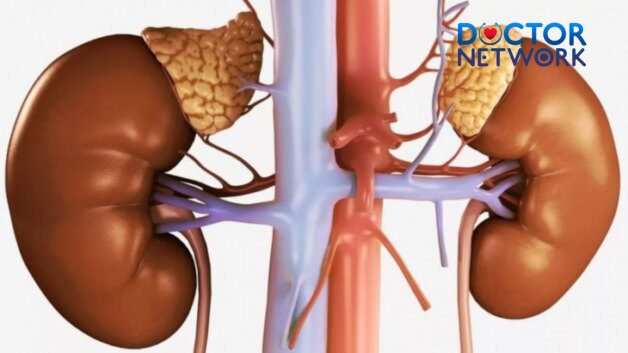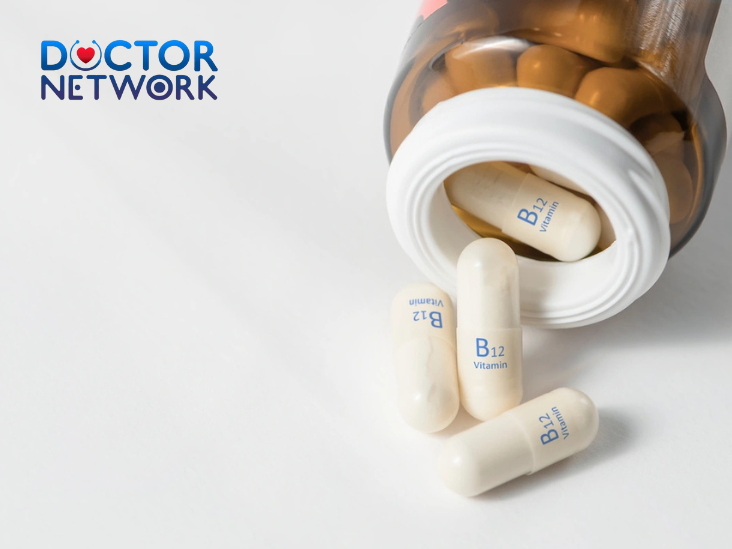Parents constantly worry about providing the safest nutrition and hydration for their infants, and distilled water often emerges as a seemingly pure choice for their precious little ones. Yes, Can babies drink distilled water, but with important caveats: only after six months of age, in strict moderation, and never as a replacement for breast milk or formula. The pristine purity that makes distilled water appealing also strips away essential minerals that developing bodies need, creating potential risks when used improperly.
This comprehensive guide explores the intricate balance between safety and nutrition when considering distilled water for infants. We’ll examine the purification process that creates this ultra-clean beverage, weigh the genuine benefits against serious health risks, and provide evidence-based timing recommendations. You’ll discover how distilled water compares to other hydration options, learn proper introduction methods, and understand when pediatric consultation becomes crucial. Our analysis includes environmental considerations, formula preparation guidelines, and practical solutions for anxious parents navigating water quality concerns in their communities.

Babies Drink Distilled Water
Babies Drink Distilled Water Understanding Distilled Water
Distilled water represents the purest form of H2O available through a meticulous purification process that removes virtually every dissolved substance. The distillation method involves heating water until it transforms into steam, then cooling that vapor back into liquid form through condensation. This thermal purification eliminates dissolved solids, minerals, chemicals, bacteria, viruses, and other contaminants that typically exist in natural water sources.
The resulting liquid contains minimal to no dissolved solids, creating a beverage with a characteristically flat taste and neutral pH level. Unlike spring water or tap water, distilled water lacks naturally occurring minerals such as calcium, magnesium, sodium, and potassium. This absence of mineral content explains both its appeal as a “clean” option and its potential drawbacks for infant nutrition.
The distillation process requires significant energy input, as water must reach boiling point (212°F or 100°C) before collection as purified condensate. Commercial distillation facilities use specialized equipment to ensure consistent quality, while home distillation units provide smaller quantities for personal use. The end product maintains its purity indefinitely when stored properly in clean, sealed containers.
Why Parents Consider Distilled Water
Modern parents frequently choose distilled water due to legitimate concerns about contaminants in alternative water sources, particularly tap water systems that may contain chlorine, fluoride, heavy metals, or other chemical additives. Municipal water treatment facilities add various substances for disinfection and public health purposes, but these additions can create anxiety among caregivers seeking the purest possible nutrition for their infants.
Health-conscious families living in areas with questionable water quality often view distillation as insurance against potential waterborne illnesses or long-term exposure to harmful substances. Industrial pollution, agricultural runoff, and aging infrastructure contribute to contamination concerns that drive parents toward purified alternatives. News reports about lead pipes, chemical spills, or bacterial outbreaks in public water systems further reinforce these protective instincts.
Many parents believe distilled water offers gentleness on developing digestive systems, though scientific evidence supporting this claim remains limited. The absence of minerals and additives creates a perception of reduced stress on immature organs, particularly kidneys that are still developing their filtering capabilities. However, medical professionals emphasize that healthy infants typically handle properly prepared formula or appropriate water sources without difficulty.
Benefits of Distilled Water for Babies
Pure and safe drinking water emerges as the primary advantage of distilled water for infant hydration, as the rigorous purification process eliminates virtually all potential contaminants that could harm developing immune systems. The removal of bacteria, viruses, parasites, heavy metals, chemicals, and other harmful substances provides peace of mind for parents concerned about water quality in their communities.
Distilled water significantly reduces the risk of waterborne diseases that can cause severe illness in vulnerable infants whose immune systems haven’t fully matured. Unlike untreated water sources that may harbor dangerous pathogens, distilled water undergoes thermal sterilization that destroys microorganisms during the boiling phase of production.
Formula preparation benefits tremendously from distilled water’s consistent purity and neutral composition. The absence of minerals and chemicals ensures that infant formula’s carefully balanced nutritional profile remains unaltered during mixing. Commercial formulas undergo extensive testing to provide optimal nutrition, and distilled water preserves this precision without introducing variables that might interfere with nutrient absorption or taste.
The consistent quality of distilled water eliminates variability between batches or sources, providing predictable hydration that parents can trust. Unlike tap water that fluctuates in mineral content, pH levels, or chemical additives based on seasonal changes or treatment adjustments, distilled water maintains identical composition over time.
Developing kidneys experience reduced workload when processing distilled water compared to mineral-rich alternatives. The absence of excess dissolved solids means less filtering burden on organs that are still maturing their capacity to handle various substances efficiently.
Potential Risks of Distilled Water for Babies
The lack of essential minerals represents the most significant concern when providing distilled water to infants, as the purification process removes beneficial substances like calcium and magnesium that support healthy development. Calcium plays a crucial role in bone formation, muscle function, and nerve transmission, while magnesium contributes to enzyme function, protein synthesis, and cardiovascular health.
Over-reliance on distilled water instead of breast milk or properly prepared formula can create nutrient deficiencies that impact long-term growth and development. While moderate amounts pose minimal risk, excessive consumption may contribute to inadequate mineral intake during critical developmental periods when babies establish their foundation for lifelong health.
Electrolyte imbalance poses a serious risk when babies consume large quantities of distilled water, potentially leading to dangerous dilution of essential minerals like sodium, potassium, and chloride in their bloodstream. This condition, known as hyponatremia, occurs when blood sodium levels drop below normal ranges, causing fluid shifts that can result in cellular swelling throughout the body.
The physiological mechanism behind this dangerous condition involves immature kidneys that haven’t developed full capacity to regulate fluid balance effectively. When babies consume excessive plain water, their developing renal systems struggle to maintain proper electrolyte concentrations, leading to osmotic imbalances that can cause brain swelling, irritability, seizures, or even coma in severe cases.
Water intoxication, also called water poisoning or hyperhydration, represents the most severe manifestation of electrolyte imbalance from excessive distilled water consumption. This potentially fatal condition can occur when babies receive too much plain water relative to their body weight and kidney function capacity.
| Risk Category | Mechanism | Symptoms | Prevention |
|---|---|---|---|
| Mineral Deficiency | Lack of calcium, magnesium | Poor bone development, muscle weakness | Limit to 2oz daily, maintain formula/breast milk |
| Electrolyte Imbalance | Sodium dilution | Irritability, swelling, seizures | Monitor intake, watch for behavioral changes |
| Water Intoxication | Severe hyponatremia | Vomiting, confusion, coma | Never exceed recommended amounts |
Increased urination from consuming large amounts of distilled water can paradoxically lead to dehydration if fluid losses aren’t balanced with appropriate nutrient replacement. The connection between excessive urination and electrolyte imbalance creates a cycle where babies lose both water and essential minerals, potentially compromising their overall hydration status despite adequate fluid intake.
Taste preference development may be influenced by early exposure to distilled water’s bland flavor profile, potentially creating preferences for less flavorful foods as children develop their palate. While this effect remains largely theoretical, some nutrition experts suggest that early taste experiences shape long-term food preferences.
The fluoride question presents a nuanced consideration, as distilled water removes this mineral that plays an important role in dental health. While excessive fluoride can cause fluorosis (white streaks or stains on developing teeth), complete absence may impact cavity prevention during tooth development. Parents should discuss fluoride intake with pediatric dentists to ensure appropriate balance.
When and How to Introduce Distilled Water
Age appropriateness dictates that distilled water should only be introduced after six months of age, coinciding with the introduction of solid foods when babies begin requiring supplementary hydration beyond breast milk or formula. Before this milestone, breast milk or properly prepared infant formula provides all necessary hydration and nutrition for healthy development.
The six-month threshold aligns with physiological developments that enable babies to handle small amounts of plain water safely. Kidney function matures significantly during the first half-year of life, improving the ability to process and regulate fluid intake without compromising electrolyte balance.
Even after six months, distilled water serves only as supplementary hydration rather than a replacement for breast milk or formula, which remain the primary sources of nutrition throughout the first year of life. This distinction is crucial for maintaining proper growth and development during this critical period.
Safe Introduction Guidelines
Specific quantity limits for babies under one year old should never exceed 2 ounces of distilled water within any 24-hour period. This conservative limit ensures adequate safety margins while providing necessary supplemental hydration for active infants beginning to explore solid foods.
Moderation remains paramount in all circumstances, with parents offering only small sips rather than full bottles of distilled water. The goal is gentle hydration support, not substantial fluid replacement that could interfere with nutritional intake from primary sources.
Clean container usage prevents contamination that could negate the purity benefits of distilled water. Sterilized bottles, cups, or sippy cups ensure that the water remains safe from introduction to consumption.
Temperature considerations favor room temperature service rather than cold water that might shock developing digestive systems. Extreme temperatures can cause discomfort and may be refused by babies accustomed to body-temperature breast milk or warmed formula.
Specific situations warranting careful distilled water use include:
- Hot weather conditions when increased fluid needs may require small amounts of supplemental hydration
- Illness episodes involving vomiting or diarrhea, though only alongside pediatrician-recommended electrolyte solutions like Pedialyte
- Travel circumstances where water quality may be questionable or unfamiliar
Monitoring reactions becomes essential when introducing any new substance to infant diets. Parents should watch for changes in stool consistency, unusual fussiness, or signs of discomfort that might indicate digestive upset or other adverse reactions.
Comparing Distilled Water with Other Water Types
Understanding the landscape of infant hydration options empowers parents to make informed decisions based on their specific circumstances, water quality, and baby’s individual needs. Each water type offers distinct advantages and potential drawbacks that merit careful consideration.
Tap Water Analysis
Municipal tap water provides the most cost-effective and readily available option for most families, but quality varies dramatically based on geographic location, infrastructure age, and local treatment protocols. Public water systems typically contain chlorine for disinfection, fluoride for dental health, and may include various dissolved minerals depending on the source.
Local water quality reports, mandated by federal regulations, provide detailed information about contaminant levels, treatment methods, and safety testing results. Parents can access these reports through municipal websites or by contacting water utilities directly to understand their specific supply characteristics.
Boiling tap water kills harmful microorganisms like bacteria and viruses but doesn’t remove dissolved chemicals, heavy metals, or other contaminants that may concern parents. This simple treatment method costs nothing and provides basic safety for formula preparation in areas with generally safe municipal supplies.
The safety of tap water depends entirely on local infrastructure and source quality, making individual assessment crucial rather than blanket recommendations. Urban areas with modern treatment facilities often provide excellent water quality, while rural areas may face challenges from agricultural runoff or aging distribution systems.
Bottled Water Varieties
Commercial bottled water encompasses numerous categories with varying safety profiles and mineral content levels appropriate for infant consumption. Understanding these distinctions helps parents select suitable options when distilled water isn’t available or practical.
Spring water originates from underground aquifers and contains naturally occurring minerals that may benefit older infants but could overwhelm very young digestive systems. The mineral content varies by source, requiring label examination to assess suitability for babies.
Purified water undergoes various treatment processes including reverse osmosis, deionization, or distillation to remove contaminants while potentially retaining some beneficial minerals. Quality and processing methods vary between brands, making individual product research important.
Mineral water contains naturally occurring or added minerals in concentrations that typically exceed recommendations for infant consumption. The high total dissolved solids (TDS) levels can stress developing kidneys and should generally be avoided for babies under one year old.
Nursery water specifically targets infant markets but varies significantly in composition and safety features. Some brands add fluoride, making them unsuitable for babies under 12 months, while others provide appropriate low-mineral formulations designed for formula preparation and supplemental hydration.
| Water Type | Mineral Content | Contaminant Removal | Infant Suitability | Cost Factor |
|---|---|---|---|---|
| Distilled | None | Complete | Moderate after 6 months | Medium |
| Tap (treated) | Variable | Partial | Depends on local quality | Low |
| Spring | High | None | Limited for infants | Medium |
| Purified | Low-Medium | High | Good with low minerals | Medium |
| Nursery (unfluoridated) | Low | High | Excellent | High |
Home Filtration Systems
Water filtration technology offers middle-ground solutions that remove many contaminants while preserving beneficial minerals, though effectiveness varies dramatically between system types and maintenance schedules. Understanding filtration capabilities helps parents evaluate whether home treatment provides adequate safety for infant hydration.
Basic pitcher filters like Brita remove chlorine taste and some contaminants but don’t provide comprehensive purification suitable for infant formula preparation. These systems work well for improving taste but shouldn’t be relied upon for safety in areas with water quality concerns.
Reverse osmosis systems remove most contaminants including bacteria, viruses, chemicals, and heavy metals while producing water similar to distilled but potentially retaining trace minerals. Professional installation and regular maintenance ensure optimal performance and safety.
Whole-house filtration treats all water entering the home, providing consistent quality for drinking, cooking, and bathing. These comprehensive systems require significant upfront investment but offer convenience and long-term cost savings compared to bottled water purchases.
Countertop distillation units produce true distilled water at home but consume considerable electricity and time to generate small quantities. These systems work well for families committed to distilled water but require patience and planning for adequate supply.
Special Considerations
Formula preparation represents a distinct use case from direct consumption, as commercial infant formulas already contain carefully balanced mineral profiles designed to support optimal growth and development. The primary requirement for formula mixing involves clean, safe water that won’t introduce harmful contaminants or significantly alter the nutritional balance.
Distilled water excels in formula preparation because it provides a neutral base that preserves the manufacturer’s intended nutrient ratios without adding variables that might interfere with absorption or taste. The absence of minerals means the formula’s calcium, magnesium, and other essential nutrients remain in their designed concentrations.
Water temperature considerations apply equally to distilled water as other types, with most pediatricians recommending room temperature or slightly warm preparation rather than hot mixing that might destroy sensitive nutrients or create dangerous heat levels that could burn infant mouths.
Following manufacturer mixing instructions becomes particularly important when using distilled water, as the absence of natural minerals makes precise measurement crucial for maintaining proper nutritional density. Concentrated or diluted formulas can cause digestive upset or nutritional imbalances.
Post-Six-Month Hydration Needs
Supplemental water intake after six months serves specific physiological functions as babies transition to solid foods and become more physically active. The introduction of cereals, fruits, and vegetables increases fiber intake, which requires additional hydration to support healthy digestion and prevent constipation.
Increased mobility through crawling, standing, and eventual walking elevates fluid needs as babies lose more water through respiration and perspiration. Small amounts of water help replace these losses without overwhelming developing kidney function or displacing crucial nutrition from breast milk or formula.
Solid food exploration exposes babies to new textures and flavors that may benefit from small sips of water to cleanse the palate and aid swallowing. This supportive role differs significantly from primary hydration, maintaining the supplementary nature of water intake throughout the first year.
Addressing Parental Anxieties & Empowering Choice
Acknowledging legitimate parental concerns about water quality validates the protective instincts that drive families to seek the safest possible options for their children. Media reports about contamination incidents, aging infrastructure, and chemical additives create understandable anxiety that deserves thoughtful consideration rather than dismissal.
The fear of tap water contaminants stems from real incidents including lead pipe discoveries, chemical spills, bacterial outbreaks, and industrial pollution that have affected communities across the country. These documented cases demonstrate that parental caution isn’t unfounded paranoia but reasonable concern for infant safety.
Practical Evaluation Framework
Empowering parents to make informed decisions requires practical tools for assessing their specific situations rather than relying on general recommendations that may not apply to their circumstances. Individual water quality, family resources, and infant health status all influence optimal choices.
Local water quality assessment begins with requesting and reviewing annual water quality reports that utilities must provide to customers. These documents detail contaminant levels, treatment methods, and safety testing results that help parents understand their specific supply characteristics.
Understanding key contaminants involves learning about substances that pose particular risks to infants, including lead levels above 15 parts per billion, nitrate concentrations exceeding 10 milligrams per liter, and bacterial contamination indicated by coliform presence.
Cost-benefit analysis helps families balance financial considerations against perceived safety benefits. Calculating annual costs of bottled water purchases versus home filtration system installation and maintenance provides concrete comparison data for decision-making.
Practical considerations include storage space for bottled water, travel convenience, and backup options during emergencies or supply disruptions. Families with limited storage or frequent travel may find distilled water impractical despite safety preferences.
Risk tolerance assessment varies between families based on local water quality, infant health status, and personal comfort levels with different approaches. Parents with compromised immune system babies may reasonably choose more cautious approaches than those with healthy infants in areas with excellent water quality.
The Crucial Role of Pediatric Guidance
Professional medical consultation becomes essential before introducing distilled water or making significant changes to infant hydration practices, as pediatricians possess specialized knowledge about developmental physiology and individual health factors that influence safety recommendations.
Pediatric healthcare providers can assess individual babies’ kidney function, growth patterns, and overall health status to provide personalized guidance that accounts for specific medical considerations rather than general population recommendations. Premature infants, babies with kidney problems, or those with growth concerns may require different approaches than healthy, full-term babies.
The timing of water introduction depends on multiple factors including gestational age at birth, current weight, feeding patterns, and developmental milestones that pediatricians can evaluate comprehensively. Early introduction may be appropriate for some babies while others benefit from delayed water exposure based on individual circumstances.
Specialized situations requiring pediatric input include:
- Babies born prematurely who may have different developmental timelines
- Infants with kidney, heart, or digestive system problems
- Babies showing signs of failure to thrive or feeding difficulties
- Families living in areas with documented water contamination
- Situations involving frequent travel or temporary housing
Medical professionals emphasize that breast milk or properly prepared formula should remain the primary source of nutrition throughout the first year, with water serving only supplementary roles even after six months of age. This fundamental principle guides all hydration decisions and prevents well-intentioned parents from inadvertently compromising infant nutrition.
Pediatricians also provide valuable guidance about recognizing signs of overhydration, electrolyte imbalance, or adverse reactions that might require immediate medical attention. This education empowers parents to monitor their babies safely while using distilled water appropriately.
Environmental Considerations
The environmental impact of water choices extends beyond immediate infant safety to broader sustainability concerns that conscious parents increasingly consider when making family decisions. Understanding these implications helps families balance personal needs with environmental responsibility.
Distillation requires significant energy input to heat water to boiling point and maintain continuous operation of purification equipment. Commercial distillation facilities consume substantial electricity or natural gas, contributing to carbon emissions associated with energy production. Home distillation units typically require 6-8 hours to produce one gallon of distilled water, using considerable residential energy.
Plastic waste generation from bottled distilled water purchases creates ongoing environmental burden through manufacturing, transportation, and disposal processes. Single-use bottles contribute to plastic pollution even when properly recycled, as recycling processes consume additional energy and resources.
Transportation emissions from bottled water distribution networks add carbon footprint concerns, particularly for families purchasing large quantities regularly. Local production doesn’t eliminate transportation but reduces distances compared to nationally distributed brands.
Home filtration alternatives often provide more environmentally sustainable approaches to water purification while maintaining safety standards appropriate for infant use. Reverse osmosis systems, carbon filters, and UV sterilization require initial manufacturing resources but eliminate ongoing packaging waste and transportation emissions.
Long-term cost analysis reveals that home filtration systems typically cost less over time than bottled water purchases while reducing environmental impact. Initial investment ranges from hundreds to thousands of dollars but amortizes over years of use without ongoing purchase requirements.
Parents can minimize environmental impact while maintaining infant safety by choosing locally produced distilled water when possible, using glass containers for storage when available, and considering home distillation or filtration systems for long-term use.
Conclusion – Can Babies Drink Distilled Water
Distilled water represents a safe hydration option for babies after six months of age when used judiciously as supplementary fluid rather than primary nutrition. The ultra-pure composition that makes it appealing also creates potential risks when consumed excessively or used inappropriately as a replacement for breast milk or formula.
The key principles for safe use include strict moderation with no more than 2 ounces daily, careful timing after six months of age, and continued reliance on breast milk or formula for primary nutrition throughout the first year. Parents must balance the legitimate benefits of contaminant removal against the risks of mineral deficiency and electrolyte imbalance.
Individual circumstances including local water quality, family resources, environmental concerns, and infant health status should guide decision-making rather than universal recommendations. Some families benefit significantly from distilled water use while others find tap water or home filtration more appropriate for their situations.
Professional pediatric guidance remains irreplaceable for personalized recommendations that account for specific medical factors and developmental considerations. Healthcare providers can assess individual needs and provide monitoring guidance that ensures safe hydration practices.
The ultimate goal involves providing safe, appropriate hydration that supports healthy growth and development while respecting family values and practical constraints. Distilled water serves as one valuable tool in this effort when used correctly, but success depends on understanding both its benefits and limitations within the broader context of infant nutrition and care.
Frequently Asked Questions – Can Babies Drink Distilled Water
Is distilled water safe for babies? Distilled water is safe for babies over six months old when used in moderation (no more than 2 ounces daily) as supplementary hydration alongside breast milk or formula, which should remain the primary sources of nutrition.
What are the main benefits of distilled water for infants? The primary benefits include complete removal of contaminants, bacteria, viruses, and chemicals; consistent purity for formula preparation; and reduced kidney workload from processing dissolved minerals.
What risks should parents know about? Key risks include mineral deficiency from lack of calcium and magnesium, electrolyte imbalance leading to hyponatremia, water intoxication from excessive consumption, and potential fluoride deficiency affecting developing teeth.
How much distilled water can I give my baby? Babies under one year should receive no more than 2 ounces of distilled water in any 24-hour period, offered in small sips rather than large quantities at once.
When can babies start drinking water? Water introduction typically begins after six months of age when babies start eating solid foods and require supplementary hydration beyond breast milk or formula.
When should I avoid giving distilled water? Avoid distilled water before six months of age, during illness without pediatric guidance, if your baby shows signs of electrolyte imbalance, or if it would replace significant amounts of breast milk or formula intake.
Can I use distilled water for formula preparation? Yes, distilled water works excellently for formula mixing because it doesn’t interfere with the carefully balanced nutritional profile of commercial infant formulas while ensuring cleanliness and safety.
How does distilled water compare to tap water for babies? Distilled water removes all contaminants and minerals while tap water quality varies by location. Tap water may contain beneficial fluoride but could also include chlorine, heavy metals, or other additives depending on local treatment methods.
Are there alternatives to distilled water? Alternatives include properly boiled tap water, low-mineral purified water, unfluoridated nursery water, and home filtration systems like reverse osmosis that remove contaminants while preserving some beneficial minerals.
Should I worry about contaminants in bottled water? Quality varies between bottled water brands and types. Look for products specifically labeled for infant use, check mineral content levels, avoid fluoridated versions for babies under 12 months, and choose reputable manufacturers with safety certifications.
Here are 5 pieces of evidence/guidance:
American Academy of Pediatrics (AAP) on Water for Formula Preparation
Evidence: The AAP advises that various types of water can be used for preparing infant formula, including tap water (if safe), bottled water (which can include distilled, purified, or spring water). If there are concerns about tap water safety (e.g., lead), they recommend using bottled water or boiled tap water (boiled for 1 minute and cooled).
Relevance to Distilled Water: Distilled water falls under the “bottled water” category and is considered safe for mixing formula because the formula itself provides the necessary nutrients and electrolytes. The primary concern shifts to ensuring the baby receives fluoride from other sources if consistently using non-fluoridated water like distilled.
Source: American Academy of Pediatrics – HealthyChildren.org
Author: American Academy of Pediatrics (organization)
Specific Article Snippet/Concept: While not a single “study,” their guidance pages reflect this. For example, in “How to Safely Prepare Formula with Water”: “You can use any type of clean water — tap or bottled — to prepare liquid-concentrate or powdered formula. If you are concerned about the purity of your water supply, talk with your baby’s doctor or your local health department. Your local health department can also tell you if the tap water in your community needs to be boiled for safety before using it to prepare formula.” Distilled water is an option if tap water is not ideal.
Link: https://www.healthychildren.org/English/ages-stages/baby/formula-feeding/Pages/How-to-Safely-Prepare-Formula-with-Water.aspx (This page focuses on safety and mentions different water types).
And related: https://www.healthychildren.org/English/ages-stages/baby/feeding-nutrition/Pages/Water-Safety-For-Your-Baby-Formula.aspx (Discusses fluoride and water choices)
Centers for Disease Control and Prevention (CDC) on Fluoride and Infant Formula
Evidence: The CDC discusses the use of fluoridated water for infant formula. They state that it’s safe to use fluoridated water to mix infant formula. However, if a baby exclusively consumes formula mixed with water containing fluoride at the optimal level (0.7 mg/L) or higher, there might be a small chance of developing mild dental fluorosis. Distilled water contains no fluoride.
Relevance to Distilled Water: If parents choose to use distilled water (which has no fluoride) consistently for mixing formula, they should discuss fluoride supplementation with their pediatrician or pediatric dentist once the baby is around 6 months old, as fluoride is essential for preventing tooth decay.
Source: Centers for Disease Control and Prevention (CDC) – Community Water Fluoridation
Author: Centers for Disease Control and Prevention (organization)
Specific Page: “Infant Formula and Fluoridated Water”
Link: https://www.cdc.gov/fluoridation/faqs/infant-formula.html
Quote/Key Point: “If your baby is primarily fed infant formula reconstituted with fluoridated water, there may be an increased chance for mild dental fluorosis. To lessen this chance, you can use low-fluoride bottled water some of the time to mix infant formula; these bottled waters are often labeled as “de-ionized,” “purified,” “demineralized,” or “distilled.”” This acknowledges its use but highlights the fluoride aspect.
World Health Organization (WHO) on Water and Electrolytes for Infants
Evidence: The WHO strongly recommends exclusive breastfeeding for the first 6 months of life. For formula-fed infants, the formula is designed to meet all their fluid and nutritional needs. Giving extra water, especially to young infants, can lead to them drinking less breast milk or formula and can also pose a risk of water intoxication (hyponatremia), which dilutes the baby’s sodium levels.
Relevance to Distilled Water: While this applies to any plain water, distilled water, being devoid of electrolytes, does not mitigate this risk and in fact, offers no electrolyte benefit. The key takeaway is that infants under 6 months generally do not need supplemental water of any kind unless medically advised.
Source: World Health Organization (WHO)
Author: World Health Organization (organization)
Specific Guidance: Found in their infant feeding guidelines and breastfeeding recommendations.
Link (General Breastfeeding Guidance): https://www.who.int/health-topics/breastfeeding#tab=tab_2 (Emphasizes “Breast-milk is also an important source of water for your infant, especially in hot climates. Offering water before 6 months of age can reduce the amount of breast-milk your infant takes.”) The same principle of adequate hydration from milk/formula applies to formula-fed babies.
Scientific Understanding of Demineralized Water’s Impact (General, not infant-specific study, but underlying principle)
Evidence: Research on the health effects of consuming demineralized water (like distilled water) long-term suggests potential issues due to the lack of essential minerals and its potential to leach minerals from the body or food it contacts.
Relevance to Distilled Water for Babies: While short-term use for formula mixing (where formula provides minerals) is less concerning, relying on distilled water as the primary drinking water for an older baby or child without ensuring adequate mineral intake from diet could be problematic.
Author: Frantisek Kozisek (and others in similar research). This specific report was prepared for the WHO.
Title: “Health risks from drinking demineralised water” (from a WHO workshop/report context)
Source: This particular paper was often cited from WHO symposia or publications focusing on nutrients in drinking water. The full report: “Nutrients in Drinking Water,” WHO, 2005. Chapter 12 is “Health risks from drinking demineralised water.”
Link: https://iris.who.int/bitstream/handle/10665/43387/9241593989_eng.pdf (PDF of the WHO book “Nutrients in Drinking Water”. Go to Chapter 12, page 149 by F. Kozisek).
Key Point: “Sufficient evidence is now available to confirm the health consequences from drinking water deficient in calcium or magnesium. …demineralised water that has not been remineralised, or low-mineral content water – in the light of the absence or substantial lack of essential minerals in it – is not considered ideal drinking water…” While this is a broader context, it underscores the importance of minerals in drinking water, which distilled water lacks.
General Pediatric Guidance on Introducing Water (AAP)
Evidence: The AAP advises that babies generally don’t need water until they start solid foods, usually around 6 months of age. Even then, it’s small amounts (a few sips, a few ounces a day). Breast milk or formula remains their primary source of hydration.
Relevance to Distilled Water: When water is introduced, using tap water (if safe and fluoridated) is generally preferred over distilled water for older babies due to the fluoride content. If distilled water is used, parents should be mindful of overall mineral and fluoride intake.
Source: American Academy of Pediatrics – HealthyChildren.org
Author: American Academy of Pediatrics (organization)
Specific Article Snippet/Concept: “Recommended Drinks for Young Children Ages 0-5” guidance.
Key Point: For 6-12 months: “It’s also okay to offer a little water (4–8 ounces a day / ½–1 cup) when your baby starts eating solid foods. … If your tap water is fluoridated, drinking it can help prevent tooth decay.” This implies a preference for fluoridated tap water over non-fluoridated options like distilled water once water is introduced.
Kiểm Duyệt Nội Dung
More than 10 years of marketing communications experience in the medical and health field.
Successfully deployed marketing communication activities, content development and social networking channels for hospital partners, clinics, doctors and medical professionals across the country.
More than 6 years of experience in organizing and producing leading prestigious medical programs in Vietnam, in collaboration with Ho Chi Minh City Television (HTV). Typical programs include Nhật Ký Blouse Trắng, Bác Sĩ Nói Gì, Alo Bác Sĩ Nghe, Nhật Ký Hạnh Phúc, Vui Khỏe Cùng Con, Bác Sỹ Mẹ, v.v.
Comprehensive cooperation with hundreds of hospitals and clinics, thousands of doctors and medical experts to join hands in building a medical content and service platform on the Doctor Network application.


























